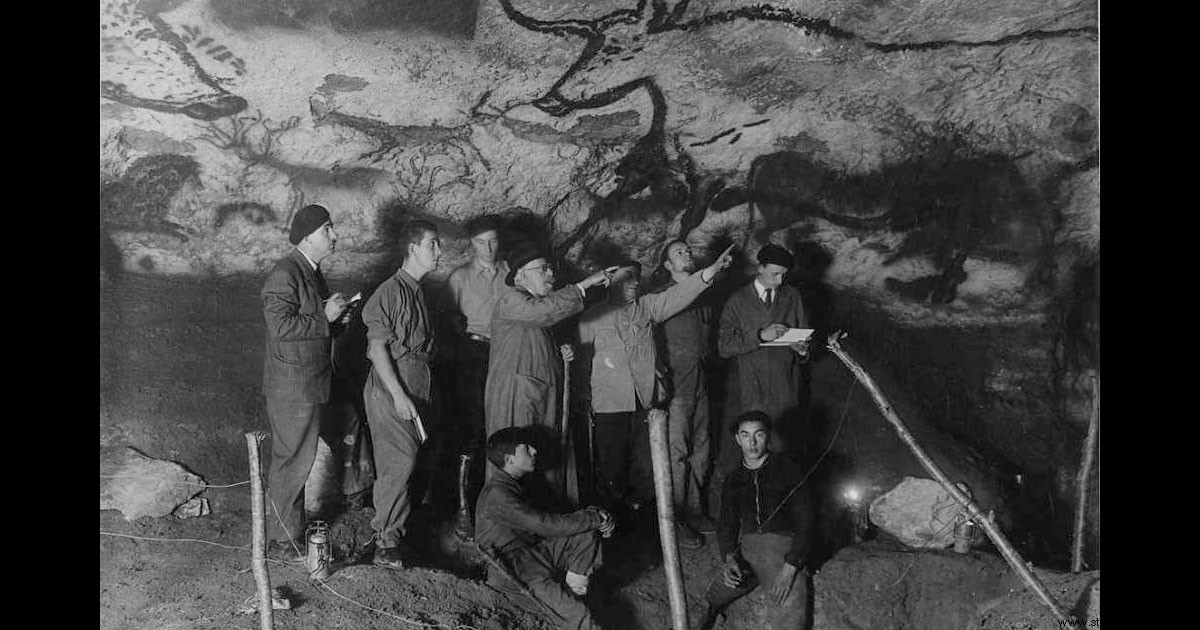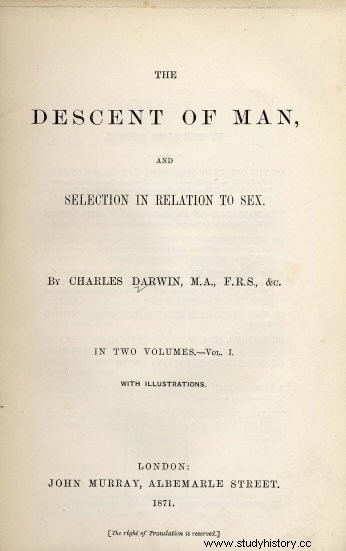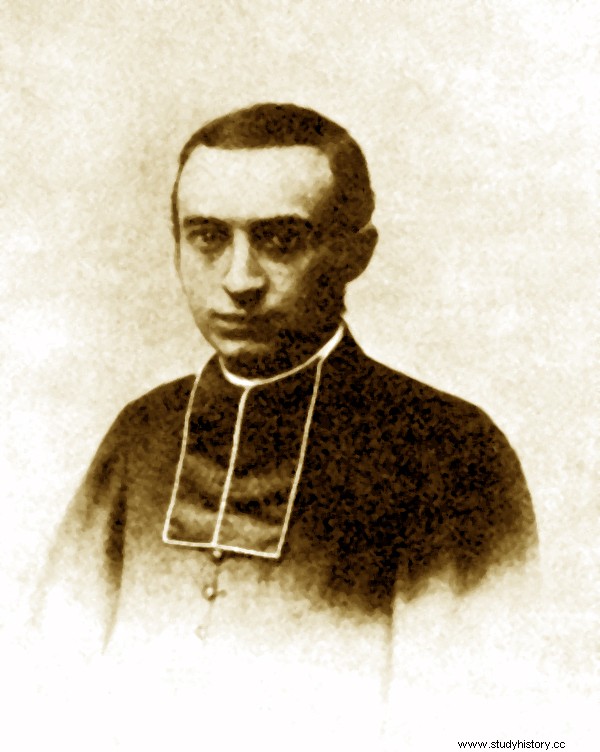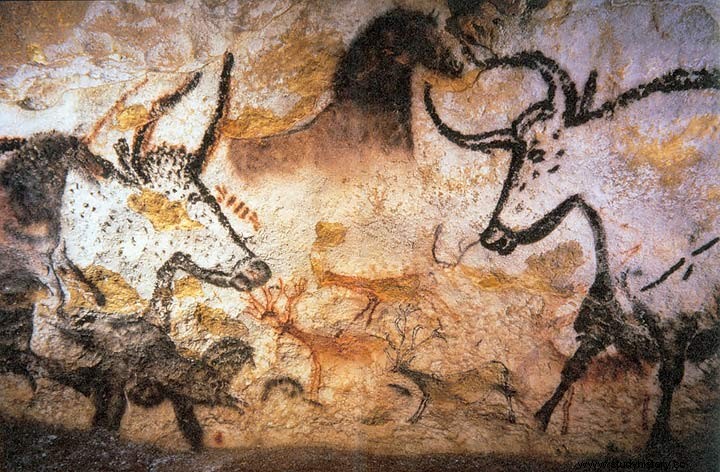
Abbe Breuil Who was the first woman Eve or Lucy?

Eva, in an oil painting by Albrecht Dürer and Lucy, a reconstruction at the Museum of Natural History in Washington D C
To begin with it may seem like a strange question and even out of place. In addition, it is necessary to verify that the Abbé Breuil I did not get to know the discovery of Lucy . Which is considered to be the oldest hominid remains on the planet . Therefore, it is evident that it is a rhetorical question, to curiously approach the debate on the great prehistorians, who emerged within the Catholic religion .
But in the same way I must admit that since I learned about the story of Henry Breuil, I have asked myself this question many times. Moreover, I decided to write about this curiosity of history, when by chance I discovered another similar character in this case, the Basque José Miguel de Barandiarán . That in contrast to Abbé Breuil he did know the discovery of Lucy in Africa in 1975 . In addition, after introducing myself to the subject, another series of names appeared, which share religion and their love for prehistory. But to start the debate, we need to approach several aspects:
Charles Darwin.
The human being has always been interested in his origins , and the knowledge of the great precursor civilizations of his history. This is demonstrated by knowledge during the European Middle Ages, of Greek, Roman and even Egyptian culture, or of other parts of the world such as Marco Polo's China. But this had always been a kind of limit in the studies of antiquity, until the arrival of Charles Darwin . In the first place with the publication in 1859 of The Theory of Species and later the Origin of Man in 1871. Therefore, halfway through the 19th century, Charles Darwin was the forerunner of the study of prehistory , which can be imagined as a cataclysm in the Holy Catholic See.

Cover of The Origin of Man from 1871
Providentissimus Deus
In other words, we are dealing with the Papal encyclical of 1893 “On the study of the sacred scriptures ”, and carried out by Pope Leo XIII. It is a call to fight against the recent birth of prehistoric studies , which evidently jeopardizes the biblical texts that present Adam and Eve as precursors of humanity. At the same time, it calls for an election by the pertinent authorities in the matter, of professors who have acquired scientific culture supported by the practices of the Bible. Finally, note that it obviously criticizes Darwin's theory of evolution , all this despite the renewal of the creation date according to the Bible to 6000 years.
At this point we can think broadly, the education they found and where the following characters went intellectually:
Abbé Henry Breuil

Henry Breuil newly ordained Priest
Without a doubt we are facing the father of Prehistory . Henry Breuil was born in Mortain, a small town in Lower Normandy in the year 1877. From a very young age he directed his life to Catholic studies, and his great passion was the investigation of prehistory. In the first place he consecrated himself a priest in the year 1900 , and later obtained the Degree in Natural Sciences at the Sorbonne in Paris . After which, and after being released from his duties by the church, he dedicated his life to studying Prehistory. To put it in some way, few sites or caves in France and the Iberian Peninsula were left unstudied by our character. In addition to traveling around the world, he calls for any advance in a field as new as prehistoric studies.
But if Abbé Breuil stood out in any field, it was in the study of Paleolithic Art . It should also be mentioned that he was the first to establish a system for the classification of Parietal Art , dating it between 30,000 and 8,000 years old . Therefore, entering into clear contradiction against the assumptions of the Papal Encyclical of Leo XIII. Said classification completed by André-Leroi-Gourham is still in force today.
José Miguel de Barandiaran.

The father of studies on the origin of Basque Culture
he Born in 1889 in Autun, a town in the interior of the Basque Country. In the same way as the Abbé Breuil, and following the advice of his mother, he was ordained a priest in 1914 . Likewise, a year later he graduated in Theology from the University of Burgos . But from the following year he dedicates himself fully to the investigation of prehistory . Specifically next to Telésforo de Aranzadi and Enrique Eguren they manage to excavate and bring to light the dolmens of the Sierra de Aralar, after which the next 20 years are dedicated to discovering the prehistory of the Basque Country. During this period he became friends with Henry Breuil.
But when civil war breaks out he has to go into exile in the French Basque Country. From where he is claimed by the main international conferences of Prehistory. After which he returned to the Basque Country in 1953 and dedicated the rest of his life to the study of Basque Culture . He died in 1991 with the not inconsiderable figure of 101 years.
Other examples
The story has several similar characters, who after becoming priests turn their gaze to prehistory. To give some examples, we can talk about the French Pierre Teilhard de Chardin , and Abbé André Glory .
The first of them, guided by his mother, becomes a Jesuit, after which he begins his adventure through prehistory. We owe Pierre Teilhard the discovery of Peking Man . In other words, the first remains of homo erectus outside of Africa, obviously in China.
While Abbé André Glory , after being ordained a priest in 1933, he becomes the most outstanding disciple of Henry Breuil . Specifically, finishing one of the most important research works of Prehistoric Parietal Art, in the Lascaux cave between 1952 and 1963.

Lascaux Cave
Response of the Church.
It is evident that the struggle of all these men within the church, to prove the evolutionary theories of Darwin. In reality they were small or large, depending on how you look at it, calls for attention to the Catholic Church . Although, for its part, it continued throughout the 20th century anchored in its retrograde postures. In short, I think that the Holy Catholic See still does not separate science and religion , at least roughly.
Despite the fact that in the Papal encyclical of 1950 called Humani Generis , of Pope Pius XII , advances on the prehistoric origin of man are not denied. Moreover, it can be said that they grant the doubt of the existence of the human body prior to the proposal of the Bible. But in any case separating the body from the human soul , which is born from the hand of the Catholic creation. In short, and according to these postulates, the artists who painted Lascaux or Altamira, to give an example, are humans without a soul.
Finally, applaud the courage of all these characters, who together with others, have managed in just over 150 years to reveal the secrets of the birth of the human species .
I do not want to finish, without inviting all of you, to give me your opinions on this controversial, and from my point of view, exciting topic.
Images:commons.wikimedia
Sources:introduccionalahistoriajvg vatican.va vatican.va
